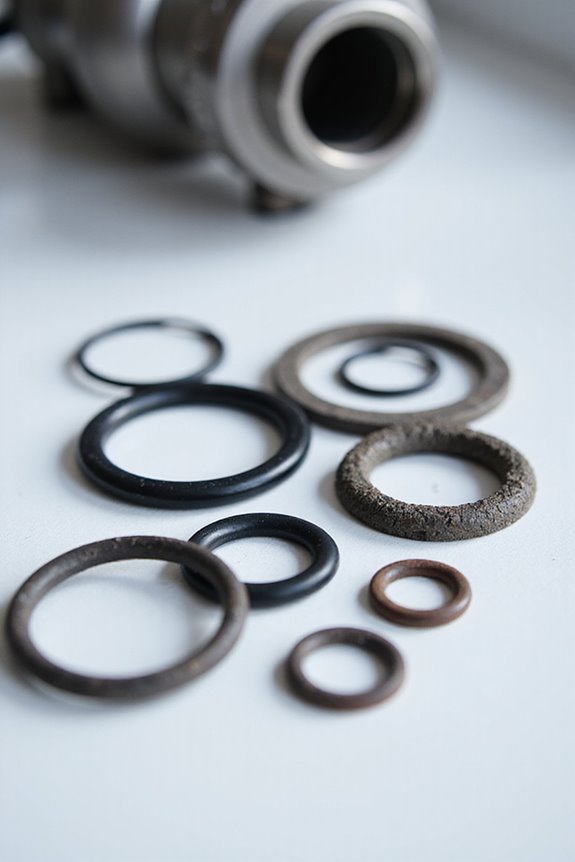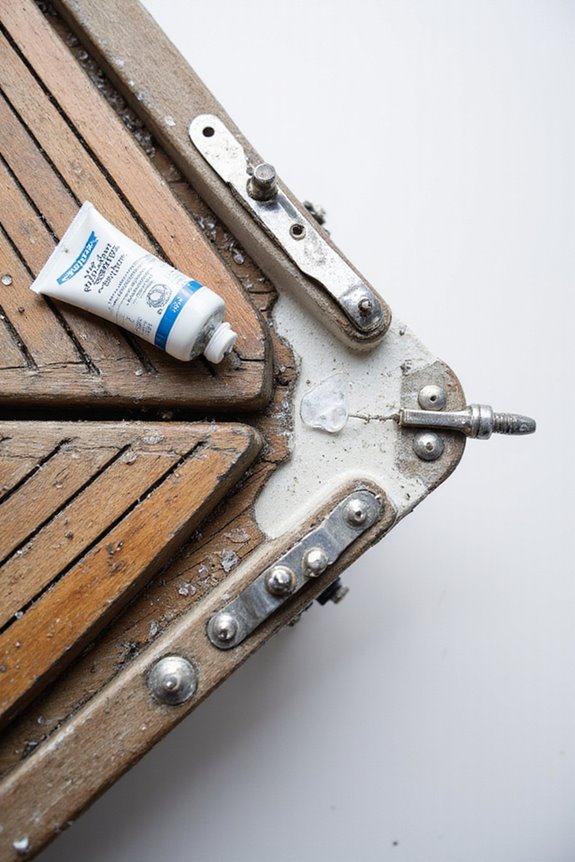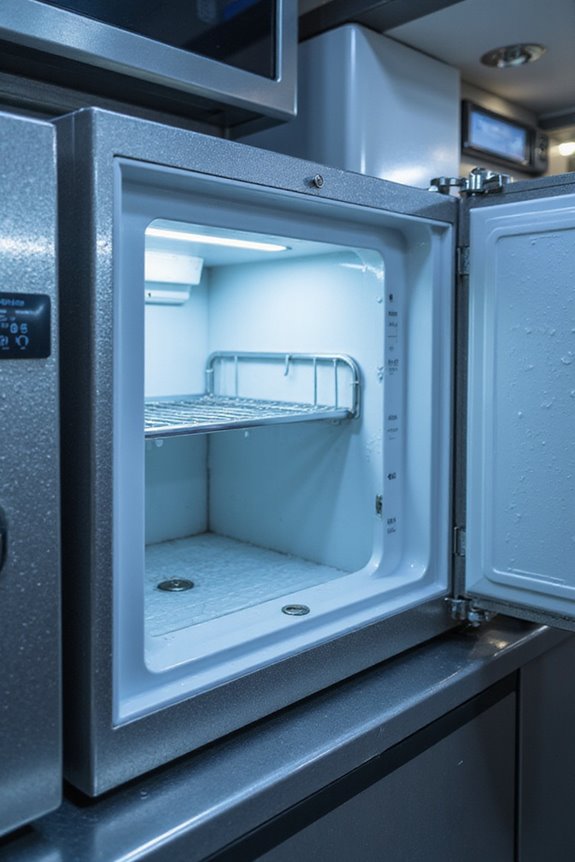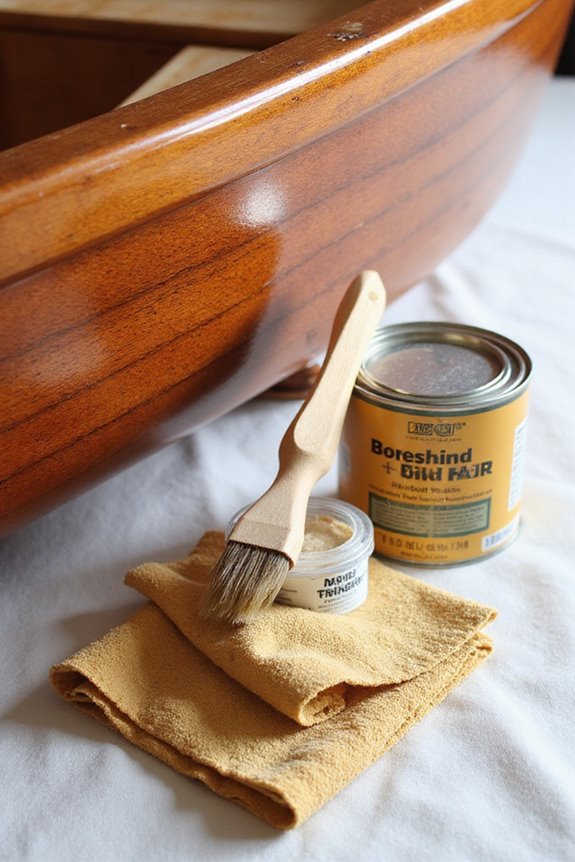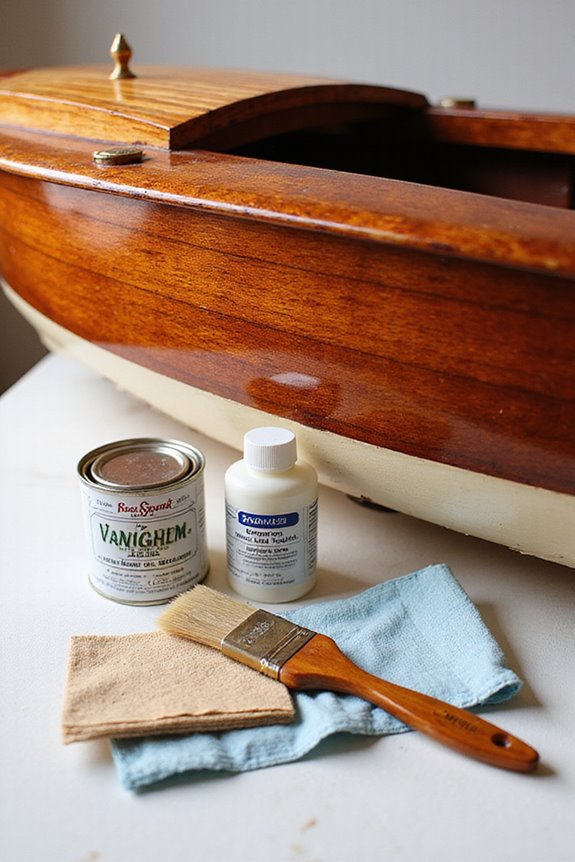Keeping O-rings in tip-top shape on your boat or yacht means regular checkups—monthly for deck caps and around every year for engine or fuel system seals. Saltwater, sun, and pressure changes can wear them out faster, so watching for cracks, loss of bounce, or leaks is key. Choosing the right material, like nitrile or silicone, and keeping them lubed and protected makes a huge difference. Curious about how to fine-tune this routine and save some headaches?
Key Takeaways
- Inspect deck filler cap O-rings monthly to detect early leaks and wear.
- Perform quarterly checks on O-rings for snug fit and proper lubrication.
- Replace critical engine and fuel system O-rings annually to ensure reliability.
- Conduct event-driven O-ring replacements after long voyages or exposure to harsh conditions.
- Maintain a detailed log of O-ring inspections and replacements for consistent maintenance.
Importance of O-Ring Maintenance in Marine Environments
While O-rings might seem like small, unassuming components on our boats and yachts, taking care of them is actually a big deal—especially in marine environments. We all know these tiny seals are essential, but did you realize choosing the right O ring types and ensuring material compatibility can make or break their effectiveness? Saltwater, sun, and temperature swings aren’t exactly O-rings’ best friends, so picking materials like nitrile or silicone that handle these challenges is smart. Plus, storing them properly and avoiding damage during installation helps keep them in top shape. We’re all in the same boat here—literally—so keeping these seals healthy isn’t just maintenance; it’s part of making sure our adventures stay smooth and leak-free. Who wouldn’t want that, right?
Key Factors Influencing O-Ring Replacement Frequency
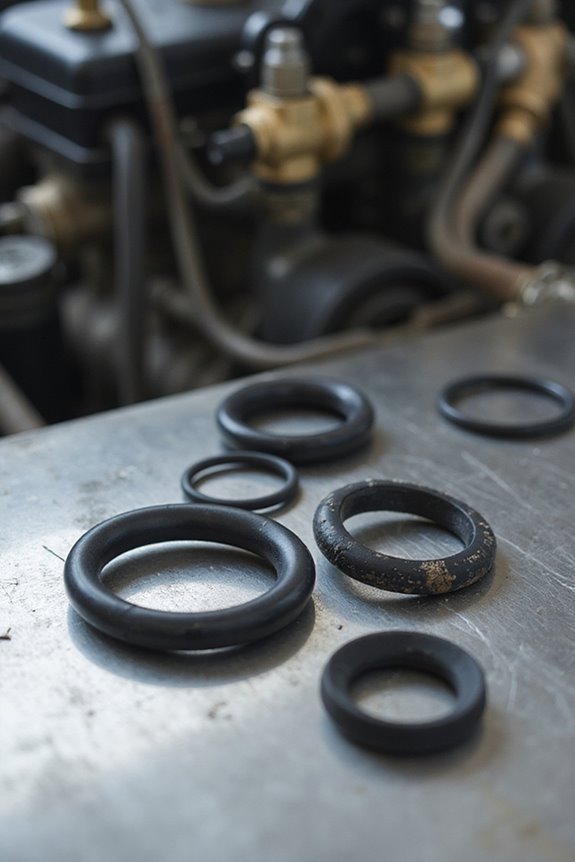
Because no two boats—or their voyages—are exactly alike, the frequency at which we need to replace O-rings can vary quite a bit. Different O ring types, from nitrile to fluorocarbon, react differently to saltwater, UV exposure, and chemical contact, affecting their lifespan. We also need to evaluate operational conditions like pressure fluctuations and temperature swings, which can speed up wear and tear. Then there’s installation—if O-rings aren’t seated properly, they won’t last long, no matter their material. So, how often should we replace them? Replacement intervals really depend on all these factors working together. Keeping an eye on environmental stress and system demands lets us tailor our maintenance schedule, ensuring our O-rings seal tight without causing unnecessary downtime or surprise leaks.
Typical Maintenance Schedules for Boat and Yacht O-Rings
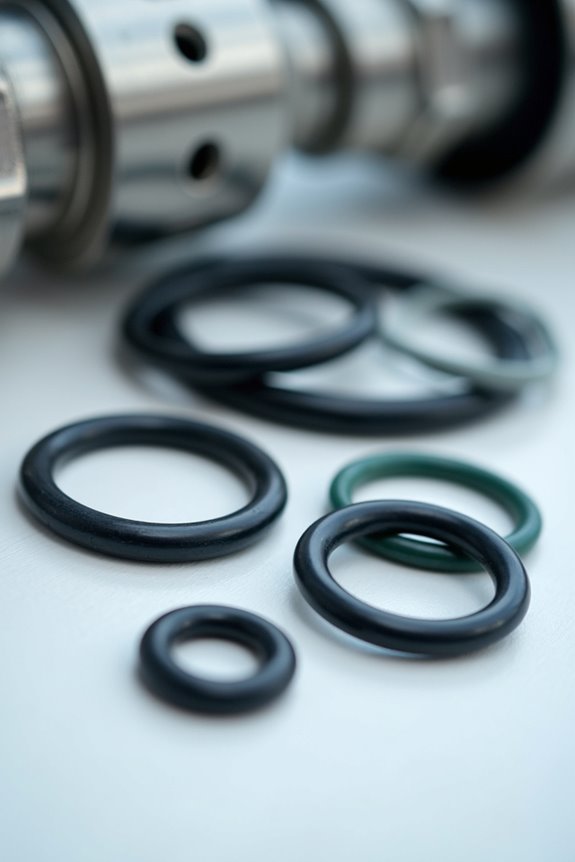
Since O-rings might seem like small, unassuming components, it’s easy to overlook just how often they need a little TLC. Different O ring types—like nitrile for fuel caps or those tougher seals in engine areas—each have unique maintenance intervals we can’t ignore. For instance, monthly checks on deck filler caps catch leaks early, while quarterly inspections keep seals lubricated and snug. We aim to replace critical O-rings annually, especially around engines and fuel systems, to dodge costly mishaps. And let’s not forget event-driven replacements after long voyages or tough conditions—we’re all about staying proactive. Tracking these schedules might not sound thrilling, but keeping a log of replacements and spares on board means peace of mind and smooth sailing for all of us.
Visual Signs Indicating O-Ring Wear and Damage
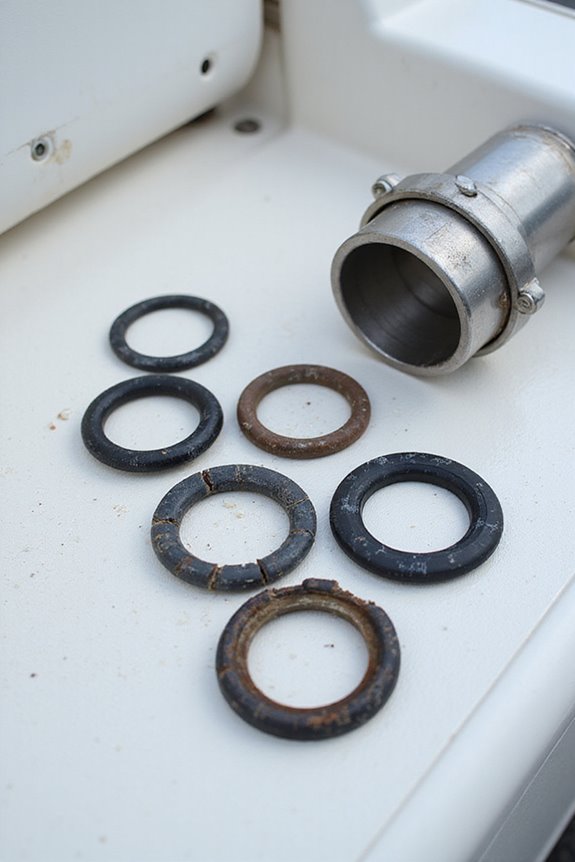
We all know it’s smart to stick to regular maintenance schedules for those tiny but mighty O-rings on our boats and yachts. But how do we really tell when an O-ring’s waving the white flag? Visual signs are our best friends here. Faded colors, cracks, or an O-ring that stays squished instead of bouncing back are clear wear indicators. Pay attention to changes in o ring materials—if they feel too hard or too soft, that’s trouble. Leaks or moisture buildup around seals? Definitely a red flag. And don’t forget, harsh conditions like chemicals, temperature swings, or vibrations often speed up wear and tear. So, are we keeping a sharp eye? Let’s catch these signs early and avoid costly fixes later!
Recommended O-Ring Materials for Different Marine Applications
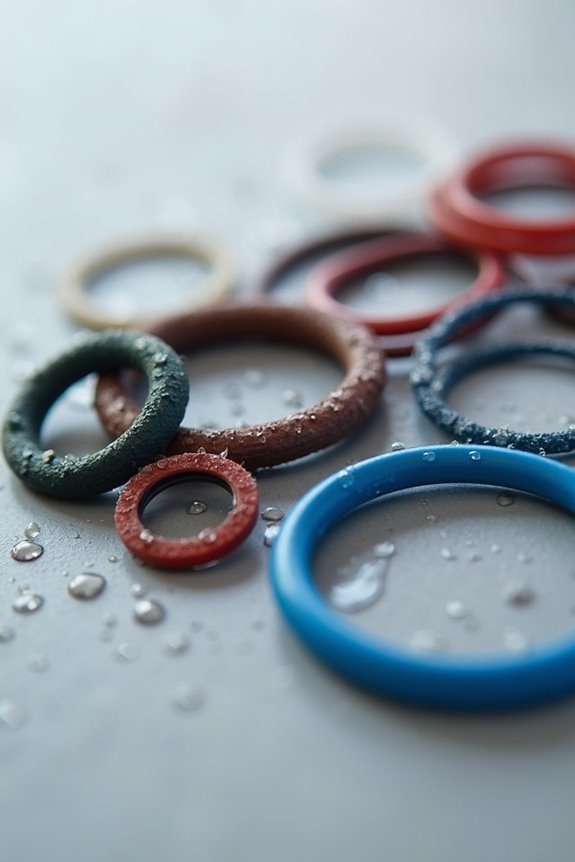
When it comes to picking the right O-ring material for your boat or yacht, it’s not one-size-fits-all—different areas on your vessel demand different qualities. For fuel systems, nitrile O ring materials work great since they resist oil and fuel well, though they don’t love ozone or weathering as much. Silicone shines in HVAC or engine parts exposed to extreme temperatures but can’t handle petroleum oils, so think water or air systems instead. Viton is our premium pick for harsh marine applications, resisting chemicals, abrasion, and sun exposure superbly. For water and deck gear, EPDM stands out with its strong resistance to water, steam, and weather. So, which O-rings you choose actually helps keep your boat sail-worthy and worry-free—pretty important, right?
Procedures for Inspecting and Replacing O-Rings
Choosing the right O-ring material was step one, but making sure those rings are in good shape over time is just as important. Let’s inspect them carefully—look for cracks, brittleness, or loss of flexibility since good O ring compatibility means durability under stress. Removed rings deserve a close look; some damage only shows when bent. Before installing new ones, clean grooves thoroughly and use silicone-based lubricants to avoid damaging the material—no petroleum, please! When fitting the new ring, our installation techniques matter: avoid stretching or twisting, and seat the O-ring evenly to prevent leaks. Need a little help? Mild soapy water can ease tight fits. Finally, always test your work with a pressure check; it’s a small step that saves big headaches later.
Integrating O-Ring Care With Other Boat Maintenance Tasks
Although maintaining O-rings might sound like a small part of boat care, integrating their upkeep with other maintenance tasks can really save us a ton of time—and headaches—down the line. By including O ring inspections during regular engine checks or oil changes, we streamline our routines and catch issues early. Ever thought about O ring training for the crew? It’s a smart move. When everyone knows what to look for, we minimize surprises and keep the boat running smoothly. Plus, tracking O-ring replacements alongside other maintenance helps us budget and schedule better. So why not bundle those checks together? It turns a scattered chore list into a well-oiled plan, making our beloved vessel safer, more reliable, and ready for the water without extra fuss.
Environmental Challenges Affecting O-Ring Longevity
Since our boats and yachts spend so much time outdoors, it’s no surprise that environmental factors play a big role in how long O-rings actually last. Between UV resistance and ozone durability, we need to pick materials wisely—EPDM or fluorocarbon often do the trick. Ever noticed how extreme temperatures can turn a flexible O-ring brittle or cause it to expand? That’s where temperature stability comes in, making silicone and Viton good choices for hot or cold spots. Don’t forget moisture impact; excess water can swell O-rings, messing with their seal. Plus, chemical interactions with pollutants may lead to performance degradation over time. Environmental exposure isn’t kind, but with careful material selection and regular checks, our O-rings can keep their seal and our adventures smooth. How’s that for teamwork?
Cost Benefits of Proactive O-Ring Maintenance
When we talk about maintaining our boats, proactive O-ring care might not be the flashiest topic, but it can save us a boatload of trouble—and money—over time. Think about it: replacing a couple of O-rings costs around $10, yet ignoring them risks costly repairs and breakdowns that seriously eat into our budgets. By staying ahead with regular O-ring replacements, we boost maintenance efficiency and avoid unexpected downtime that can stall our adventures. Plus, keeping these small seals in check prevents water damage, protecting engine parts and preserving our boat’s value—talk about cost savings that really add up! So, wouldn’t you agree it makes sense to treat O-ring care like a trusty first mate, quietly ensuring smooth sailing and fewer stressful surprises?
Tips for Extending the Life of O-Rings on Boats and Yachts
Even though O-rings might seem like tiny, unimportant pieces, they play a huge role in keeping our boats running smoothly and leak-free. So, how can we boost their lifespan? First, O ring longevity strategies include regular inspection—using magnification helps catch tiny cracks before they turn into big problems. Plus, selecting the right O ring material selection is key; different environments demand different rubber types, and using the wrong one is like bringing a snow shovel to a beach party. Don’t forget lubrication—apply the correct lubricant sparingly to keep flexibility but avoid attracting dirt. And hey, protecting O-rings from harsh UV rays or chemicals? Essential! Following these tips not only saves us time and money but joins us in the savvy community keeping boats shipshape together.
Frequently Asked Questions
Can I Use Universal O-Ring Kits for Multiple Boat Systems?
While not a cure-all, universal compatibility does let us confidently address multiple boat systems using varied O-ring sizes. Together, we create a community of savvy boat owners who value versatility and preparedness in their maintenance toolkit.
How Do Saltwater and Freshwater Differently Affect O-Ring Durability?
It is understood that saltwater corrosion speeds up O-ring wear, causing brittleness and failures, while freshwater offers better longevity with less aggressive effects. Together, we’ll choose materials fitting your marine environment to keep seals strong and reliable.
Are There Eco-Friendly O-Ring Materials Suitable for Marine Use?
We’ve found biodegradable materials and sustainably sourced options like fluorosilicone and EPDM ideal for marine settings. Together, we can choose eco-friendly O-rings that protect our oceans while ensuring durability and chemical resistance out at sea.
What Tools Are Essential for O-Ring Replacement on Yachts?
Like delicate dance partners, O-ring maintenance techniques need precision. We rely on essential replacement tools—pry tools, socket wrenches, and O-ring extraction kits—to keep our vessels leak-free, ensuring we’re all part of a smooth-sailing community.
Can O-Ring Failures Cause Engine Damage or Just Leaks?
It is understood o ring failures cause more than just leaks—they can seriously hurt engine performance through overheating and corrosion. That’s why prioritizing o ring maintenance helps us all keep our engines running smoothly and reliably on every trip.

